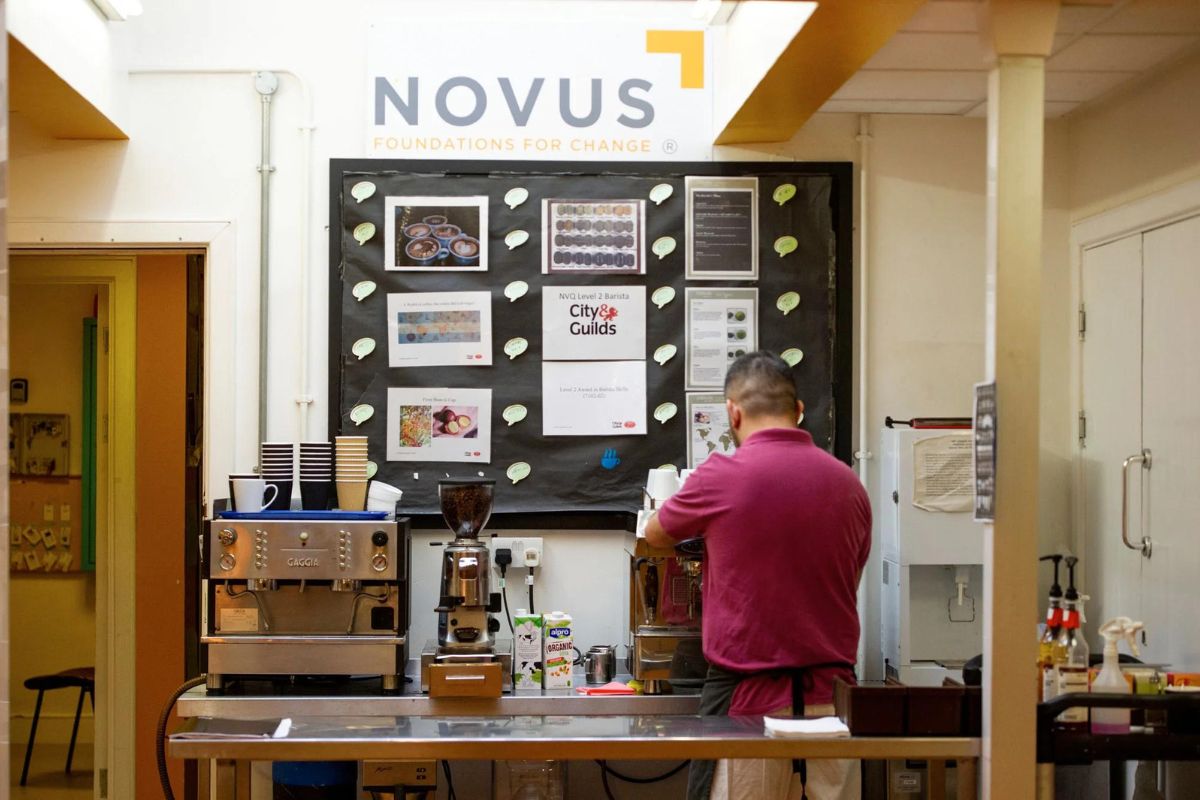Largest annual fall in real pay on record – down 3.4% – as cost of living crisis bites

The labour market remains tight, despite the ongoing cost-of-living crisis and recent slowdown in economic growth, with the number of vacancies reaching a record high of 1.3 million, and payrolls growing by 0.3 per cent in May.
First Short-term Unemployment Rise Since 2020!
But there are signs that our tight post-pandemic labour market may be starting to cool. Although unemployment was at a joint 50-year low in March, short-term unemployment has risen over the past few months for the first time since 2020 and total unemployment actually rose in April. Typical pay for employees fell in May, offering the Bank of England reassurance that a wage price spiral is far from underway.
If the labour market is a turning point, and this trend of rising unemployment continues over the coming months, as forecast by the Bank of England, people looking for work or more hours to maintain their incomes may find themselves frustrated.
Real Wages Down by £26 per Week
Labour market figures published by the ONS today show that real wages are down by £26 per week (£114 per month) on the same period last year – the worst single month pay growth on current records.
And the figures show that the three-month average for pay growth has seen real wages fall by 3% (compared to the same time last year) – the worst slump in a decade.
Read the stats here.
Sector Response

Chancellor of the Exchequer, Rishi Sunak said:
“Today’s stats show our jobs market remains robust with redundancies at an all time low.
“Helping people into work is the best way to support families in the long term, and we are continuing to support people into new and better jobs.
“We are also providing immediate help with rising prices – 8 million of the most vulnerable families will receive at least £1,200 of direct payments this year, with all families receiving £400.”

Minister for Employment, Mims Davies MP said:
“Today the unemployment rate remains close to a 50 year low, and still well below pre-pandemic levels, with almost 2 million more women in work than 2010. That’s fantastic news, but there’s more to do.
“Work is the best way for people to provide for their families – those going into full time employment could be at least £6000 better off than out of work on benefits. That’s why we’ve launched the Way to Work campaign to get half a million more people into jobs.
“From job opportunities in Jobcentres to skills bootcamps for people considering a new industry, there’s a huge amount of help out there, and our Work Coaches are working tirelessly to get people at any age, or career stage, into fulfilling and stable employment.
“We’re also focused on helping people on the lowest incomes with the rising cost of living, including through changes to Universal Credit and rise in the National Living Wage.”

Anthony Painter, Director of Policy and External Affairs at CMI said:
“Increasingly people are facing a choice: work longer hours or find ways of increasing pay. And we can see these cost of living choices playing out in the latest labour market figures. More hours are being worked and we know more broadly many are shifting work internally and externally to improve compensation. A few are being tempted into work, seemingly mainly former students currently.
There is a divide in today’s tight labour market between those who have scarce skills or work in industries that pay bonuses and those who don’t. For those who don’t, the options are more hours where available and hope that basic pay plus Government policy support helps meet living costs. Millions of public sector workers will be in this position.
Even taking into account short term factors, growth is anemic or non-existent. Therefore, from a policy perspective, the key is to lighten the weight of tough choices for employers and workers alike. Where brakes are applied they should be squeezed rather than slammed. If action is too abrupt the losers will be businesses and the many millions of working families in the so-called ‘squeezed middle’ as well as those with low incomes. Government policy should also consider incentives for older workers to return.
“Employers, workers and policy makers are facing an incredibly risky environment. The onus is on policy makers to steer a steady course. The labour market is one relatively good economic news story and is helping many millions in an inflationary environment.”

Responding to the latest ONS figures, Stephen Evans, Chief Executive of Learning and Work Institute, said:
On the cost of living rises:
“The cost of living crisis is hitting hard with real regular wages falling more sharply this month than in any month this century. We face a year of pain. The Chancellor has increased the help on offer and needs to prepare to do more. We also need an urgent focus on getting our economy moving again so living standards can rise.
On the recruitment crisis:
The headlines suggest a tight labour market, with employment rising and unemployment and economic inactivity falling. But this fall in economic inactivity was driven by lower numbers of students, while the number of older people and those who are long-term sick out of work remains high. With employment still 366,000 lower than before the pandemic, it is this worker shortage that is driving a recruitment crisis. The Government and employers need to urgently address this.”

Commenting on the figures, IES Director Tony Wilson said:
“This is really grim news on pay and is only likely to get worse. Despite the tightest labour market on record, nominal pay is broadly flat meaning that rocketing inflation is leading to the largest cuts in real pay in at least two decades. The picture is particularly bad for public sector workers, with real pay falling by nearly 6% year on year. At the same time while employment is starting to pick up, there’s still a million people missing from the labour force compared to pre-pandemic trends – particularly older people, those with health conditions and overseas workers. The large rises in long-term ill health are particularly concerning, with a quarter of a million more people outside the labour force than before the pandemic.
“With inflation and interest rates both continuing to rise, the tightest labour market on record, economic growth flat and a ‘missing million’ from the labour force, the crises that we’ve got are not the ones that we prepared for through the Plan for Jobs. So we need urgent measures to boost labour supply rather than to dampen demand, and in particular to reinvest the £2 billion underspends on measures announced to tackle unemployment since the Plan for Jobs.”

Matthew Percival, CBI Director for People and Skills, said:
“With pay continuing to fall behind inflation, it’s no wonder that households are forecast to further reduce their spending this year. Urgency is needed to build confidence and ease the risks of a full-blown recession.
“Not being able to hire the people they need is a major drag on business confidence, so the Government should immediately allow firms to use their Apprenticeship Levy to tackle shortages and update the Shortage Occupation List.”
Melanie Wilkes, Head of Research at the Work Foundation, Lancaster University, a leading think tank for improving work in the UK:
“Today’s data may show record employment levels (75.6%) but one in five UK workers are in severely insecure jobs, and the UK continues to face mass staff shortages as economic inactivity remains high (21.3%).
“Over 6 million British workers experience low pay, uncertain hours or reduced employment rights. In the context of a cost of living crisis, insecure workers are most at risk from rising inflation and a slowing economy. The Government cannot level up the country unless it introduces new legislation to deal with work insecurity.
“And when it comes to tackling inactivity, blunt instruments like the Way To Work scheme or more draconian welfare policies that push job seekers into any job will not help those businesses struggling to fill 1.3 million vacancies. We need to see a proper plan for participation, with more tailored and specialist support for those who want a job but who face multiple barriers to doing so.”

TUC General Secretary Frances O’Grady said:
“Working families deserve financial security.
“But real wages are falling off a cliff as the cost of living soars.
“Millions of workers are being forced to choose between paying their bills or feeding their families. That isn’t right.
“We urgently need action to get people the pay rise they deserve. That means boosting the minimum wage, a real public sector pay rise, and the government supporting – not attacking – unions who are campaigning hard for fairer pay.
“Ministers can’t stand by and do nothing while families all around the country suffer.
“It’s time to demand better. That’s why I’ll be marching across London on Saturday, with other trade union leaders, community organisations and thousands of frontline workers. Please join us.”
Greg Thwaites, Research Director at the Resolution Foundation, said:
“Britain is in the midst of the highest inflation in four decades, and a recovery that has run out of steam. But we are not yet seeing a wage spiral as some are expected, but instead the deepest pay squeeze in over a decade.
“The labour market could now be at a turning point. On the one hand, vacancies are at a record high. On the other, unemployment has started to tick up. If this continues, families may start to find it harder to work more if they’re feeling poorer, but the Bank of England may feel more confident that it can avoid domestic inflation pressures spiralling.”

Geoff Smith, CEO of emerging talent consultancy Grayce, comments on the latest ONS Labour Market figures:
“The latest ONS Labour Market figures have reported lower levels of unemployment than job vacancies, for the first time since records began. This is the culmination of the last two years of rapid evolution in the change of dynamic between employers and employees and the ever-increasing skills gap. As the digital skills gap continues to grow, so does the need for companies to invest more in their workforce to attract the best talent available. Otherwise, the opportunities offered by emerging technologies will remain untapped.
“This shift in mentality is particularly evident in the graduate workforce, with young people feeling more empowered than ever before to chase the opportunities they deserve and access high-quality and comprehensive training. Traditional consultancy routes into the workplace are no longer fit for purpose for the modern workforce. Graduates should feel empowered to explore their ambitions and strive for high-quality development opportunities, to set them up for excellence in their future careers. A more inclusive and modern approach to consultancies needs to be examined, as companies continue to show a dire need of young, ambitious and driven workers if the nation is to tackle this growing digital skills gap, if we are to remain a leading tech nation. As digital services and technologies evolve, organisations need talented people who are ready to adapt their skill set along with this. Harnessing this talent is absolutely vital if they’re to maintain the furious pace of digital change we’ve seen during the pandemic.”

Jack Kennedy, UK economist at the global job site Indeed, commented:
“There were some signs of softening in the latest labour market data, with the unemployment rate ticking up to 3.8%. Employment and vacancies rose further, despite the -0.3% contraction in the economy during April, but growth rates appear to be levelling off. The UK’s incomplete jobs recovery may be running out of steam as the economic outlook darkens, with employment still languishing below pre-pandemic levels.
“We may be nearing a turning point for the labour market as creeping uncertainty results in employers taking their foot off the accelerator, but for now it remains extremely tight with a record 1.3 million vacancies, acute hiring challenges and big staffing gaps across a range of sectors. A key driver of this remains the UK’s large participation gap. Though the inactivity rate ticked lower again, it remains well above pre-pandemic levels.
“Meanwhile soaring inflation continues to erode living standards. In real terms, regular pay is falling at its fastest rate in over a decade, down by 2.2% y/y in April, with worse to come later in the year as inflation heads towards double digits.”
Walid Koudmani, chief market analyst at financial brokerage XTB, comments:
“Today’s unemployment figures appear to be somewhat encouraging as they showed an increase in the employment rate from February to April 2022 with an estimated 75.6%, 0.2 percentage points higher than the previous three-month period but 0.9 percentage points lower than before the coronavirus pandemic Meanwhile, the UK economic inactivity rate was estimated at 21.3%, 0.1 percentage points lower than the previous three-month period, but 1.1 percentage points higher than before the coronavirus pandemic. Despite these being positive signs, it is important to remember that the general state of the economy continues to be troubling amid rampant inflation and general economic downturn.”












Responses